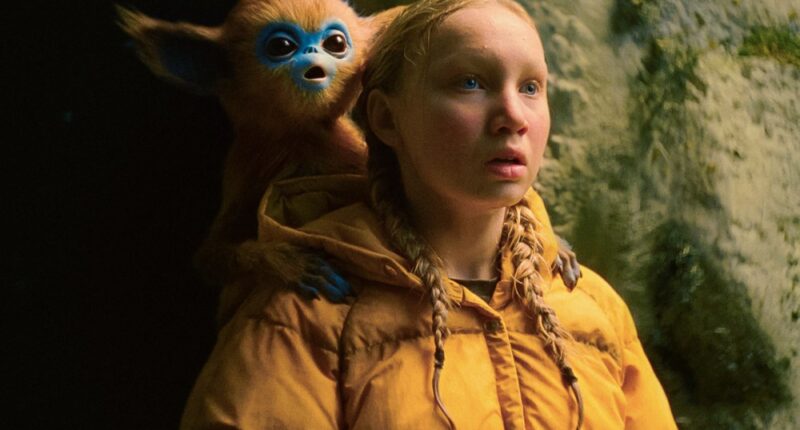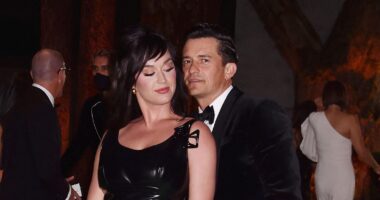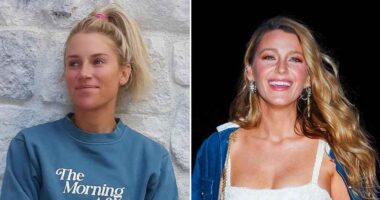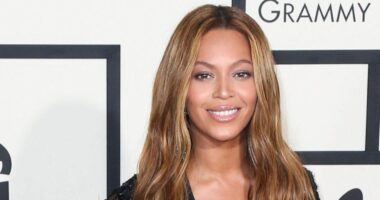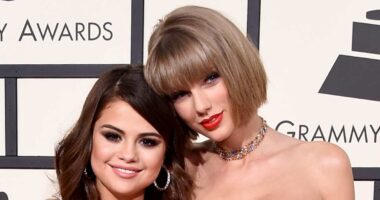The story around Isaiah Saxon’s feature debut, “The Legend of Ochi,” took a drastic turn, as so many Hollywood stories did, with this month’s Los Angeles fires. Saxon lost his home in the blaze, and the film’s theatrical release was pushed back. However, having spent years developing and working on the fantasy feature, Saxon is standing steadfastly behind his film and will be present for its Sundance world premiere.
“The Legend of Ochi” is a throwback. Its aesthetics, fantasy elements and a blend of practical and digital effects will be instantly endearing to audiences of a certain age but are modern enough and so well executed as to attract younger audiences weaned on the vfx-heavy fare of more recent decades.
The film tells the story of Yuri, a shy farm in a remote village on the island of Carpathia. Born as the only child to a father who yearned for a son, Yuri was raised to fear mysterious primate species known as ochi, who are demonized by the local population. But when Yuri discovers a wounded baby left behind after a failed Ochi hunt, she flees her home to help the young animal find his. “News of the World” breakout Helena Zengel plays Yuri, with Finn Wolfhard, Emily Watson and Willem Dafoe each playing key roles in the film’s main cast.
“The Legend of Ochi” uses a mix of puppetry, animatronics, matte paintings and CG animation to present a breathtaking fantasy world that is so much like our own that it’s hard to tell what’s real and what’s invented. That’s by design, according to Saxon, who spoke to Variety about the film ahead of it’s Sundance premiere.
The image of Isaiah Saxon is displayed above. It features a portrait of him with a resolution of 973 pixels wide and 1024 pixels high. The picture is set against a light grey background. Isaiah Saxon is an important figure in the industry. You can see more details of the image in the lazy-load link provided.
Isaiah Saxon
Photo Credit: Alexandru Ionita
Variety: The colors, characters and even the font used all evoke nostalgia for fantasy films from the 1980s and ’90s. Can you talk about some of the specific influences you had in mind while developing the film’s aesthetic?
Saxon: Our film is about a relationship between a kid and another species and how that can be a transformational event in life. The movies that inspired our approach to this were “Kes” and “Black Stallion” – for that feeling of a realistic, grounded emotional connection – and then, of course, “E.T.” and “Totoro” for the more dreamlike sense of a creature as the mirror of a child’s unconscious inner world. For the stage work and matte paintings, we looked a lot at “Willow,” “Kwaidan,” “Ugetsu” and “Black Narcissus,” which all embrace theatrical artifice in a really elegant way. For the sort of unhinged wide-angle madcap tone that weaves its way through the film, Roald Dahl’s “The Witches” (Nicolas Roeg version) was a huge touch point. “Princess Mononoke” was a primary guiding light for its respect for the intrinsic value of nature irrespective of a human-centered lens.
It’s vital that the audience feel empathy for the ochi in this film. What was the character design process like for the creatures? Who was involved, how long did it take and what were the most difficult challenges you faced?
There is an endangered primate in the remote mountains of China called a snub-nosed golden monkey. Along with various tarsiers and lemurs, these monkeys were the main inspiration for my initial drawings. I wanted the ochi to feel plausible like maybe you just hadn’t seen the BBC nature documentary about them yet, so I felt I should mostly adhere to characteristics of existing species and not go too wild with the design. I worked with John Nolan Studios in London to bring my drawings to life: David Darby sculpted the creatures, Adrian Parish and Karl Gallivan designed the internal animatronics and John Nolan oversaw the whole process. Even though they’re a small scrappy studio, these guys had just finished the practical creatures for Jurassic World and are just incredibly talented. We started developing prototypes of the creatures back in 2019 and were able to do camera tests and performance experiments with our puppeteers. Even with the first prototype, despite having no facial movement or fur and with five puppeteers looming above, it immediately felt completely alive. Puppetry is very ancient and very deep that way. We’ve been making shadow plays on walls since caveman times, so our brain responds to it with acceptance. For the adult ochi, they are performed by little people wearing suits with heavy animatronic heads that are being operated via remote control off camera. All of the puppetry and suit performing is being guided by our primate choreographer, Peter Elliot, who has been a part of nearly every ape film since the 1970s, either in the suit himself (“Quest for Fire,” “Gorillas in the Mist,” “Congo”) or now that he’s older, directing the choreography to create authentic feeling primate motion.
How much of the film’s effects are practical, and how much/what was done using CG? And I’ll stress that this is not a value judgment question. I’m very much against the far too popular contemporary idea digital effects are bad.
All of the ochi are entirely practical in-camera performances except for a handful of CG stunt shots. We never augmented the animatronic ochi performances with CG, but every shot of Baby Ochi is ultimately a VFX shot because we had to remove the puppeteers and replace the backgrounds which they overlapped. There are over 600 VFX shots in the film, and most of them have to do with adding matte paintings and set extensions to build out the environment. As the film slowly turns the knob up on the fantasy elements, we go from purely practical locations to practical locations augmented by matte paintings, ultimately to large-scale nature sets built on a sound stage with full cg environment backgrounds. I appreciate your sentiment about the way visual effects are often maligned. I consider myself a filmmaker more than just a director, which means my art practice includes writing, drawing, editing, designing, sculpting and creating CGI and VFX, too. All of these crafts are generally celebrated, except for CG and VFX, which are largely perceived as something that requires less effort or craft than practical work. Digital visual effects are simply a set of tools with particular strengths and weaknesses. Truly this work is a kind of tedious bespoke craft art that is done by passionate people paying tremendous attention to detail.
Any good fantasy movie needs to have a set of rules it abides by if the story is to be believable. What rules did you establish for this world that ensured the story would remain credible despite featuring some pretty unbelievable circumstances?
While the film is certainly a fantasy-adventure, I did have an internal rule that everything should feel plausible and realistic, adhering to realistic patterns established in zoology, sociology, etc. I wanted kids to wonder if the ochi were actually a real species and if the island of Carpathia was a real place. Because as kids, and even as adults, we’re always learning of new animals and plants and natural phenomena that feel like they come from another world. Our setting, the island of Carpathia, is a collage directly inspired by the Carpathian Mountains, which arc through Eastern Europe. To build our version of this world, we shot in small remote villages and in the highest road-accessible mountains in Transylvania. These places maintain the largest amount of intact primeval forest and the highest populations of bears, wolves and lynx in all of Europe. There is a deep sense of mystery there, both in the natural world and in the culture of the people. When you leave the cities of Romania and go deep into the countryside, it feels like entering a time machine to a world where people still drive horse-drawn carts, scythe their fields and build haystacks to feed their animals over the long winter, yet there are still supermarkets and minivans. It’s a mixed-age world, which I find very thrilling.
